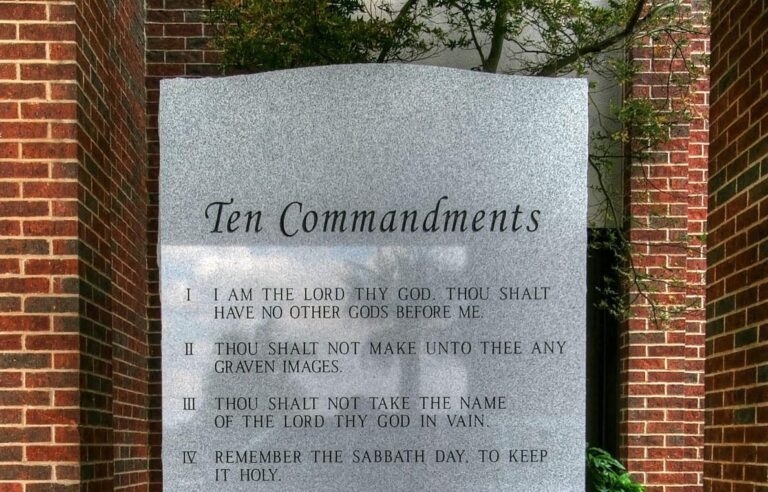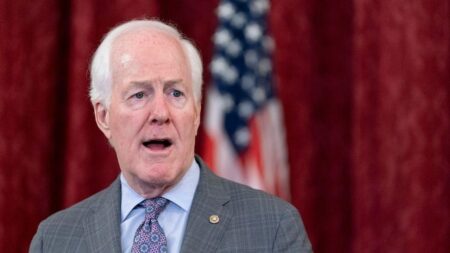Texas Legislature Enacts Bill Requiring Ten Commandments Display in Public School Classrooms
The Texas House has officially passed a Senate bill that obligates all public-school classrooms statewide to exhibit the Ten Commandments. Advocates of the measure emphasize its role in fostering ethical principles and enhancing students’ understanding of historical foundations. Conversely, critics caution that this mandate may infringe upon the constitutional principle separating church and state. The law stipulates that the Ten Commandments must be permanently and prominently displayed, underscoring a legislative intent to embed these values visibly within educational settings.
- Applicability: Enforced in every public-school classroom throughout Texas.
- Content Requirements: Complete text of the Ten Commandments must be presented.
- Deadline for Compliance: Schools must implement the displays within six months following the bill’s enactment.
| Group | Stance | Rationale |
|---|---|---|
| Bill Supporters | In Favor | Encourage moral education and historical literacy |
| Opponents | Against | Concerns about religious freedom and constitutional conflicts |
| School Administrators | Divided | Apprehensive about costs and potential legal disputes |
Analyzing the Legal and Educational Consequences of the Ten Commandments Mandate
The recent passage of the bill requiring the Ten Commandments to be displayed in all Texas public-school classrooms has ignited extensive discussion regarding its legal and pedagogical effects. Legal analysts warn that this directive could provoke constitutional challenges, particularly concerning the Establishment Clause of the First Amendment, which prohibits government endorsement of religion. Such challenges may result in expensive and protracted litigation initiated by parents or civil liberties organizations.
From an educational standpoint, the mandate presents complex challenges for teachers and school leaders. They must carefully balance adherence to the law with the need to maintain an inclusive environment that respects the diverse religious and cultural backgrounds of students. Important considerations include:
- Ensuring compliance with constitutional limits to prevent legal repercussions.
- Respecting religious diversity so that no student feels excluded or marginalized.
- Incorporating the Ten Commandments within academic frameworks such as history or social studies, emphasizing cultural significance rather than religious endorsement.
| Dimension | Potential Issue | Suggested Strategy |
|---|---|---|
| Legal | Possible violation of the Establishment Clause | Seek legal advice and maintain a neutral stance |
| Educational | Balancing religious content with inclusivity | Present within a historical or cultural context, avoiding doctrinal promotion |
| Community | Diverse reactions from parents and local groups | Engage in open dialogue and involve stakeholders in policy decisions |
Feedback from Educators, Families, and Civil Rights Advocates
Teachers throughout Texas have voiced apprehension about the bill‚Äôs implications for classroom dynamics. Many educators argue that mandating the Ten Commandments‚Äô display risks blurring the constitutional boundary between church and state, potentially undermining efforts to create a neutral and inclusive learning environment. Concerns also include the possibility of increased distractions or divisions among students from varied religious traditions. A representative from the Texas Educators Association stated, ‚ÄúOur mission is to nurture critical thinking and inclusivity, not to promote specific religious beliefs.‚ÄĚ
Parents and civil liberties groups have expressed a blend of disappointment and opposition. Numerous parent organizations emphasize the importance of respecting religious diversity while cautioning against compulsory religious displays in public schools. Civil rights groups warn that the legislation could lead to costly legal battles, referencing previous court rulings that invalidated similar laws in other states. The table below summarizes key perspectives:
| Group | Primary Concern | Likely Response |
|---|---|---|
| Educators | Maintaining neutrality in classrooms | Advocate for policy reassessment |
| Parents | Upholding respect for diverse beliefs | Organize community discussions and petitions |
| Civil Rights Organizations | Potential constitutional infringements | Prepare legal challenges and awareness initiatives |
Implementation Recommendations for Texas School Districts
With the new law in effect, Texas school districts face the responsibility of ensuring that the Ten Commandments are displayed in compliance with legislative requirements. District officials should collaborate with educators, facilities personnel, and legal experts to guarantee that the displays meet the bill’s specifications while honoring constitutional safeguards. Recommended actions include:
- Selecting durable, clear, and accessible display materials to maximize visibility.
- Standardizing the size and placement of displays across all campuses for consistency.
- Consulting legal counsel to navigate compliance issues and address community concerns.
- Conducting training sessions for staff to cover the new requirements and cultural sensitivity.
The Texas Education Agency plans to support districts by providing official guidelines and sample display templates. Below is a streamlined checklist to assist districts in meeting compliance deadlines:
| Task | Progress | Remarks |
|---|---|---|
| Identify display locations | Pending | Classrooms and hallways |
| Procure or produce displays | Ongoing | Materials vetted by legal team |
| Staff training sessions | Scheduled | Includes cultural and legal sensitivity |
| Community engagement | Planned | Inform parents and stakeholders |
Final Thoughts on the Ten Commandments Legislation in Texas Schools
The Texas House’s approval of the Senate bill mandating the Ten Commandments’ display in all public-school classrooms signals a pivotal moment in the ongoing discourse surrounding education, religion, and constitutional law. Supporters maintain that the law encourages moral development and historical awareness, while detractors emphasize the importance of upholding the separation of church and state. As the bill advances through the legislative process, stakeholders on both sides anticipate further debates and potential legal challenges. Media outlets and educational authorities will continue to track and report on this evolving issue.




